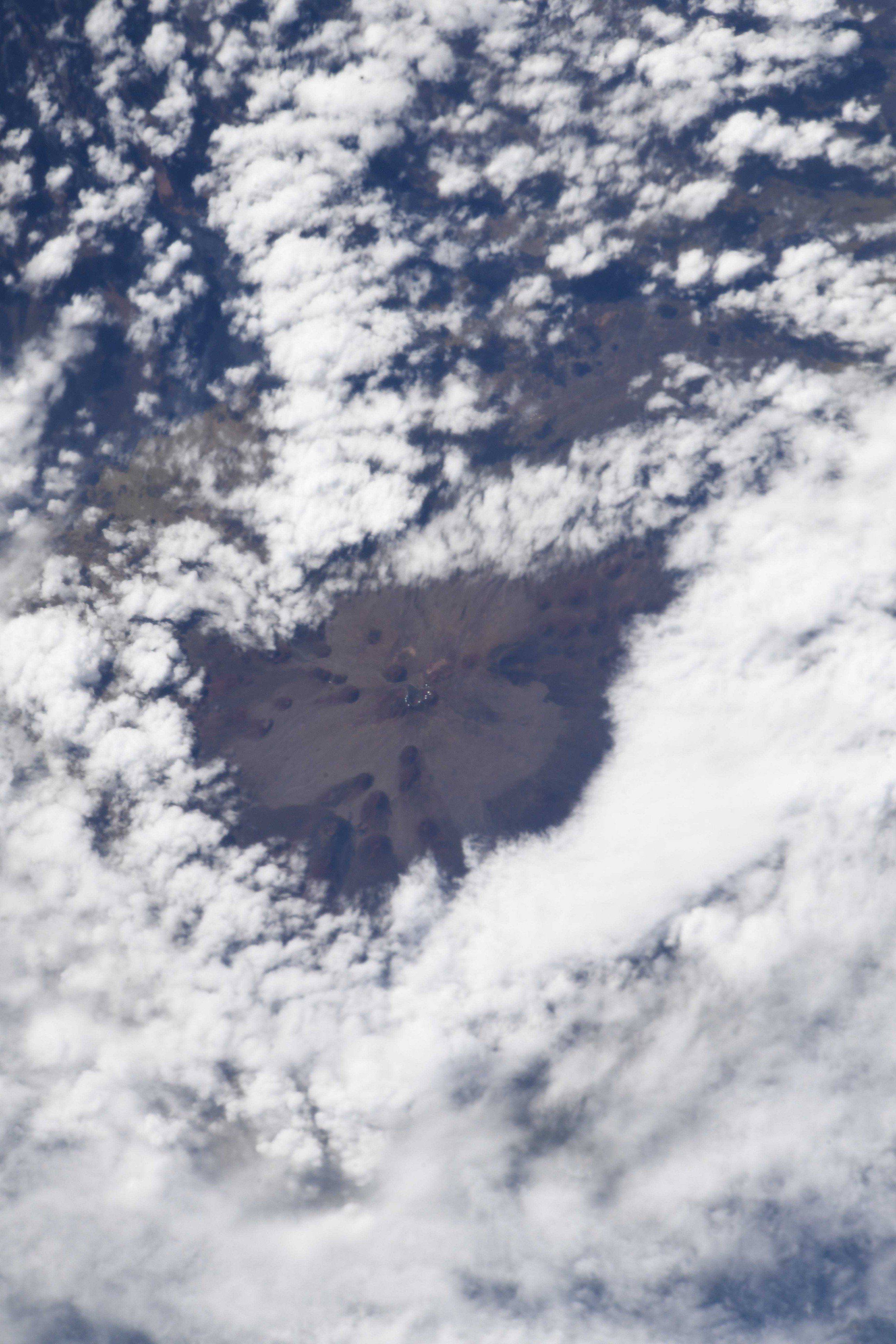[:ja]デービッド・サンジャック宇宙飛行士がISSから撮影したハワイ島のマウナケア山です。

マウナケア山は、ハワイ島を形成する5つの火山のうちの1つです。ハワイ語でマウナ・ケアとは「白い山」の意であり、冬になると山頂が雪に覆われることから名づけられました。マウナケア山山頂付近は天候が安定し、空気が澄んでいることもあり、世界11ヶ国の研究機関が合計13基の天文台(マウナケア天文台群)を設置しています。また、ハワイ原住民との取り決めから、13基より多くの天文台を建設しないことになっており、今後新たに建設する場合は、既存のものを取り壊すか新たな了承を取り付ける必要があります。
地上の様子はこちらです。

参考文献: David Saint-Jacques’s Tweet
地球俯瞰画像を見る: LiVEARTH
[Earthview Wonders] No.837: Mauna Kea Volcano🇺🇸
Astronaut David Saint-Jacques captured from ISS Mauna Kea Volcano, Hawaii Island.

Dormant Mauna Kea with 4,207.3m peak is the highest point in the state of Hawaii. Most of the volcano is underwater, and when measured from its oceanic base, Mauna Kea is the tallest mountain in the world, measuring over 10,000m in height. Mauna Kea is about a million years old, and has thus passed the most active shield stage of life hundreds of thousands of years ago. In Hawaiian mythology, the peaks of the island of Hawaii are sacred. An ancient law allowed only high-ranking aliʻi to visit its peak. With its high elevation, dry environment, and stable airflow, Mauna Kea’s summit is one of the best sites in the world for astronomical observation with 13 telescopes funded by 11 countries have been in operation. However, their construction on a landscape considered sacred by Native Hawaiians continues to be a topic of debate to this day.
The local scenery on the ground is as follows.

Reference: David Saint-Jacques’s Tweet
See earthview photo gallery: LiVEARTH[:en][Earthview Wonders] No.837: Mauna Kea Volcano🇺🇸
Astronaut David Saint-Jacques captured from ISS Mauna Kea Volcano, Hawaii Island.

Dormant Mauna Kea with 4,207.3m peak is the highest point in the state of Hawaii. Most of the volcano is underwater, and when measured from its oceanic base, Mauna Kea is the tallest mountain in the world, measuring over 10,000m in height. Mauna Kea is about a million years old, and has thus passed the most active shield stage of life hundreds of thousands of years ago. In Hawaiian mythology, the peaks of the island of Hawaii are sacred. An ancient law allowed only high-ranking aliʻi to visit its peak. With its high elevation, dry environment, and stable airflow, Mauna Kea’s summit is one of the best sites in the world for astronomical observation with 13 telescopes funded by 11 countries have been in operation. However, their construction on a landscape considered sacred by Native Hawaiians continues to be a topic of debate to this day.
The local scenery on the ground is as follows.

Reference: David Saint-Jacques’s Tweet
See earthview photo gallery: LiVEARTH[:]